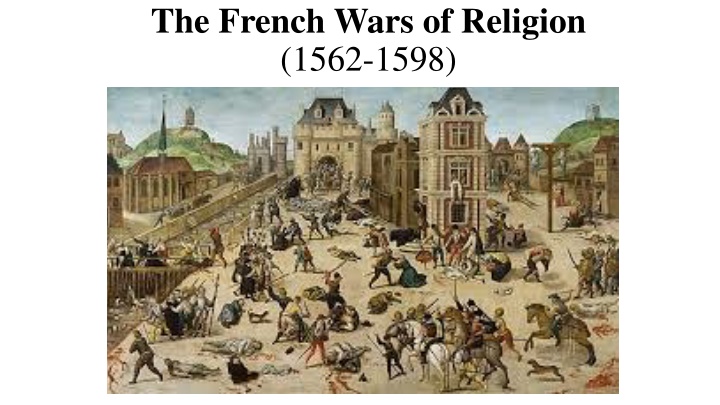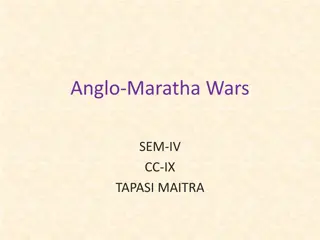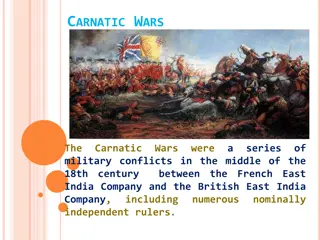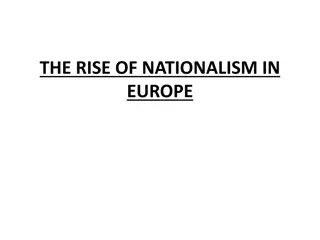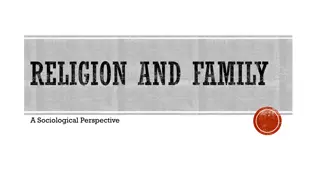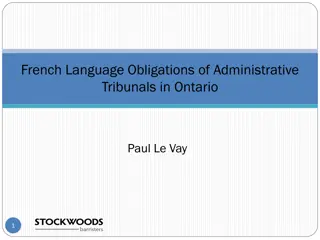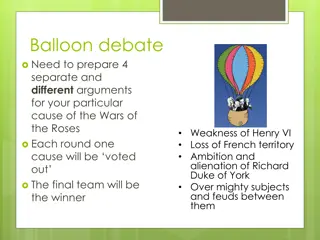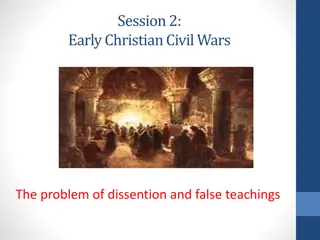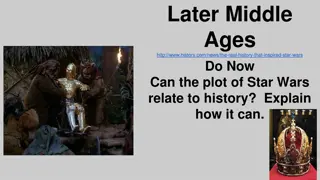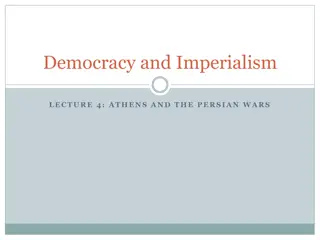The French Wars of Religion (1562-1598) - Huguenots, Massacres, and Edict
French Wars of Religion saw Catholic-Huguenot conflict, Saint Bartholomew's Day Massacre, War of the Three Henries, and eventual Edict of Nantes leading to religious tolerance in France.
Download Presentation

Please find below an Image/Link to download the presentation.
The content on the website is provided AS IS for your information and personal use only. It may not be sold, licensed, or shared on other websites without obtaining consent from the author.If you encounter any issues during the download, it is possible that the publisher has removed the file from their server.
You are allowed to download the files provided on this website for personal or commercial use, subject to the condition that they are used lawfully. All files are the property of their respective owners.
The content on the website is provided AS IS for your information and personal use only. It may not be sold, licensed, or shared on other websites without obtaining consent from the author.
E N D
Presentation Transcript
The French Wars of Religion (1562-1598)
Huguenots French Protestants (Calvinists) Plain clothing, plain churches Believed the pope was the anti-Christ Came from all levels of society including the nobility, making them a strong-willed and well-organized minority .
Historical Context Majority of France was Catholic and greatly outnumbered the Calvinist minority. France was controlled by Catherine de Medici (1519-1589) who looked for religious compromise. However, she was challenged by religious fanatics on both sides. Religion was not the only factor involved as the nobility looked to gain power from the monarchy.
Saint Bartholomews Day Massacre (1572) Guis family (ultra-Catholics) convinced Catherine de Medici that a gathering of Huguenots were a threat. 20,000 Protestants were killed by Catholics
The War of the Three Henries (1588-1589) Duke of Guise (ultra-Catholic) Of Navarre, becomes IV (Protestant & Catholic) Henry III, Valois dynasty (son of Catherine de Medici) Three days of killing left three thousand Huguenots dead. However, Henry of Navarre survived by promising to turn Catholic. Ultra-Catholics led by Henry, duke of Guise formed a Holy League in 1576 to replace Henry III (Charles IX s brother). Henry, duke of Guise seized Paris and forced Henry III to make him chief minister. Henry III assassinated the duke of Guise and joined Henry of Navarre.
Henry IV (Navarre) became king of France, converted to Catholicism and established the Bourbon dynasty. Politiques emerged, putting the politics before religion.
Edict of Nantes (1598) French Calvinists (Huguenots) would be tolerated in certain areas under certain circumstances. France continued to be predominantly Catholic Progress towards religious toleration
